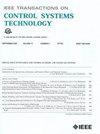Optimal Overtaking in NASCAR
IF 3.9
2区 计算机科学
Q1 AUTOMATION & CONTROL SYSTEMS
引用次数: 0
Abstract
This article studies the impact of aerodynamic drafting on optimal overtaking maneuvers in NASCAR. Two interlinked optimal control problems (OCPs) are employed: one for computing the strategy of the overtaken car and the other for the overtaking vehicle. Intervehicular interaction is due to a combination of aerodynamic drafting and collision avoidance. In the formulation presented, the cross coupling between these OCPs is unidirectional, with collision avoidance the responsibility of the overtaking vehicle. The racing vehicles are assumed to travel on a highly banked 3-D closed-circuit track. The overtaking car is subject to near-field aerodynamic interactions (“drafting”) that have a significant impact on the overtaking vehicle’s strategy. Results are presented that illustrate overtaking strategies with and without drafting; differences in the two strategies highlight the importance of drafting influences. The results are based on a Generation 7 (Gen 7) NASCAR driven on the Darlington Raceway.在纳斯卡最佳超车
本文研究了空气动力牵伸对纳斯卡赛车最优超车策略的影响。采用了两个相互关联的最优控制问题(ocp):一个用于计算被超车的策略,另一个用于计算超车的策略。车辆间的相互作用是由于空气动力学牵伸和避免碰撞的结合。在提出的公式中,这些ocp之间的交叉耦合是单向的,避碰是超车的责任。赛车假定在高度倾斜的三维闭路赛道上行驶。超车受到近场空气动力学相互作用(“牵伸”)的影响,这对超车的策略有重大影响。结果说明了有牵伸和无牵伸的超车策略;这两种战略的差异突出了起草影响的重要性。结果是基于在达灵顿赛道上驾驶的第7代纳斯卡赛车。
本文章由计算机程序翻译,如有差异,请以英文原文为准。
求助全文
约1分钟内获得全文
求助全文
来源期刊

IEEE Transactions on Control Systems Technology
工程技术-工程:电子与电气
CiteScore
10.70
自引率
2.10%
发文量
218
审稿时长
6.7 months
期刊介绍:
The IEEE Transactions on Control Systems Technology publishes high quality technical papers on technological advances in control engineering. The word technology is from the Greek technologia. The modern meaning is a scientific method to achieve a practical purpose. Control Systems Technology includes all aspects of control engineering needed to implement practical control systems, from analysis and design, through simulation and hardware. A primary purpose of the IEEE Transactions on Control Systems Technology is to have an archival publication which will bridge the gap between theory and practice. Papers are published in the IEEE Transactions on Control System Technology which disclose significant new knowledge, exploratory developments, or practical applications in all aspects of technology needed to implement control systems, from analysis and design through simulation, and hardware.
 求助内容:
求助内容: 应助结果提醒方式:
应助结果提醒方式:


